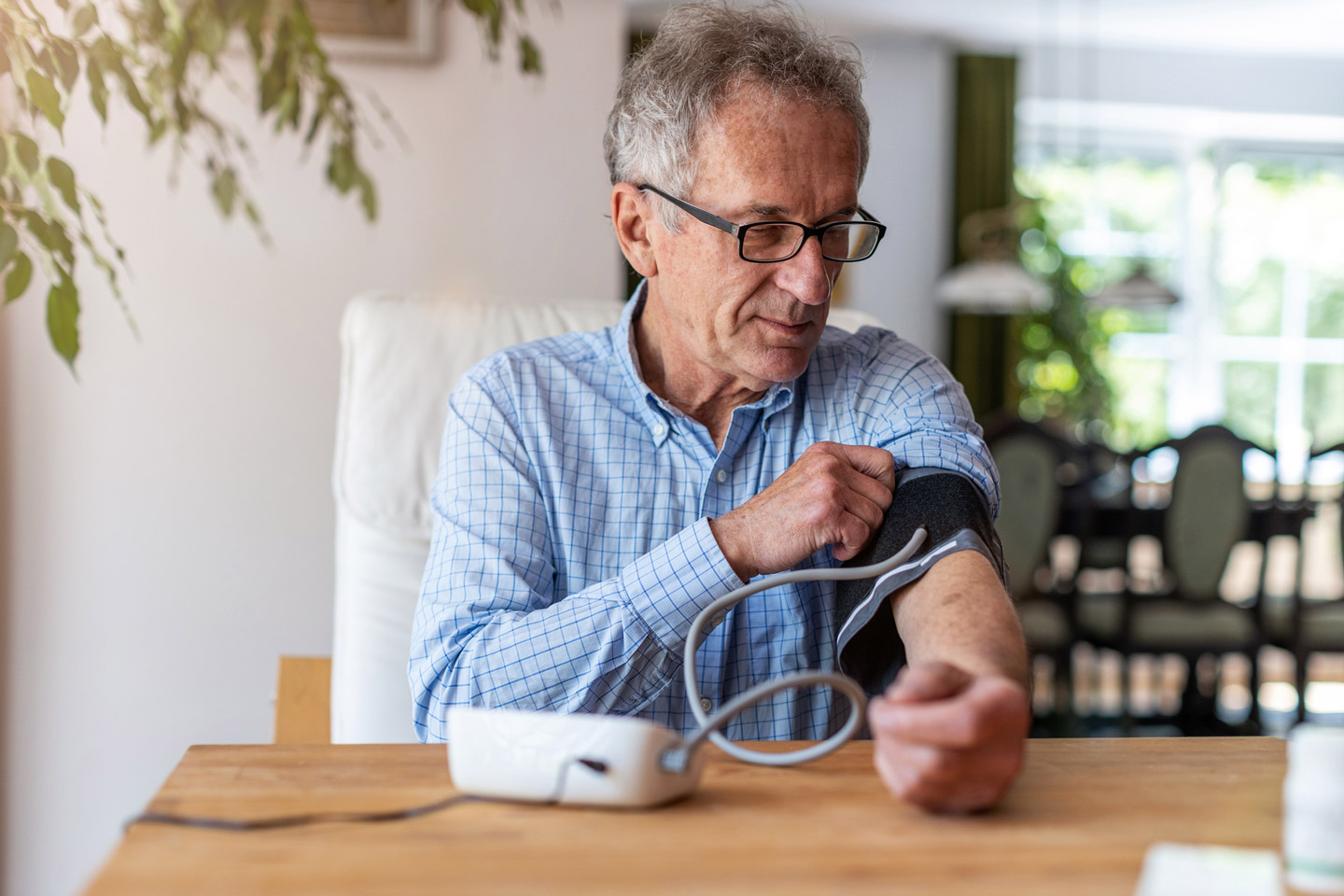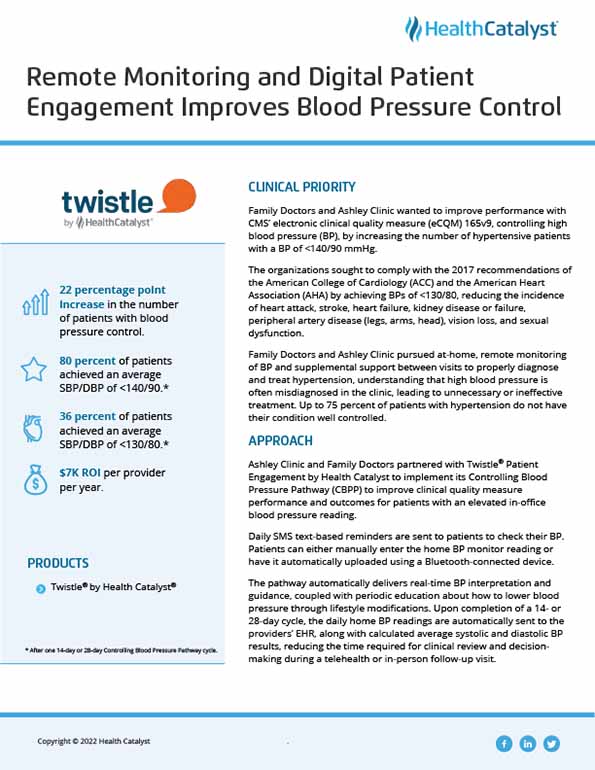Family Doctors and Ashley Clinic utilized remote monitoring and digital patient engagement software to better support patients with high blood pressure. These improvements have meaningfully impacted the diagnosis and management of high blood pressure for its patients.
Family Doctors and Ashley Clinic wanted to improve performance with CMS’ electronic clinical quality measure (eCQM) 165v9, controlling high blood pressure (BP), by increasing the number of hypertensive patients with a BP of <140/90 mmHg.
The organizations sought to comply with the 2017 recommendations of the American College of Cardiology (ACC) and the American Heart Association (AHA) by achieving BPs of <130/80, reducing the incidence of heart attack, stroke, heart failure, kidney disease or failure, peripheral artery disease (legs, arms, head), vision loss, and sexual dysfunction.
Family Doctors and Ashley Clinic pursued at-home, remote monitoring of BP and supplemental support between visits to properly diagnose and treat hypertension, understanding that high blood pressure is often misdiagnosed in the clinic, leading to unnecessary or ineffective treatment. Up to 75 percent of patients with hypertension do not have their condition well controlled.
Ashley Clinic and Family Doctors partnered with Twistle by Health Catalyst® to implement its Controlling Blood Pressure Pathway (CBPP) to improve clinical quality measure performance and outcomes for patients with an elevated in-office blood pressure reading.
Daily SMS text-based reminders are sent to patients to check their BP. Patients can either manually enter the home BP monitor reading or have it automatically uploaded using a Bluetooth-connected device.
The pathway automatically delivers real-time BP interpretation and guidance, coupled with periodic education about how to lower blood pressure through lifestyle modifications. Upon completion of a 14- or 28-day cycle, the daily home BP readings are automatically sent to the providers’ EHR, along with calculated average systolic and diastolic BP results, reducing the time required for clinical review and decision-making during a telehealth or in-person follow-up visit.
Phase 1 of the pilot study included patients over 18 years of age with an average SBP/DBP of >140/90 mmHg. The provider and staff were notified about each patient’s automatic enrollment in the Twistle CBPP so they could answer questions and encourage participation.
In Phase 2, the age range was modified to include patients 18-80 years old. Patients could opt out themselves or be opted out for reasons such as illness or injury. Patients also received encouragement to obtain a home BP monitor.
Phase 3 provided home BP monitors to all high-risk patients at the time of enrollment, and greater technical support to patients who want to use Bluetooth- or cellular-connected devices.
"The Twistle pathway has enabled us to deliver comprehensive care even when patients aren’t in the clinic, and that’s been essential to helping us properly diagnose and treat hypertensive patients."
- Dr. Peter Barker, Family Doctors
The combination of remote monitoring and digital patient engagement software to accurately diagnose hypertension and provide support to patients between in-person visits has meaningfully impacted the diagnosis and management of high blood pressure. More than 1,250 patients were enrolled in the CBPP and 465 patients opted out.


* After one 14-day or 28-day Controlling Blood Pressure Pathway cycle.


